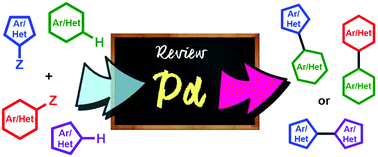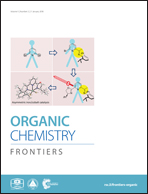Recent developments in palladium-catalysed non-directed coupling of (hetero)arene C–H bonds with C–Z (Z = B, Si, Sn, S, N, C, H) bonds in bi(hetero)aryl synthesis
Abstract
Transition metal-catalysed C–H bond functionalisation is an attractive approach for assembling valuable complex intermediates for the synthesis of pharmaceuticals, natural products, agrochemicals and fine chemicals. Selective functionalisation of one specific C–H site within a complex molecule without the assistance of a directing group is one of the major challenges in organic synthesis. The non-directed functionalisation of C–H bonds is more attractive and straightforward than the directed approach. While several reviews have covered (hetero)aryl (pseudo)halides as coupling partners in non-directed C–H bond functionalisation, this review will complement these existing contributions by focusing on the recent developments involving the employment of organometallic reagents for palladium-catalysed non-directed C–H bond functionalisation of (hetero)arene C–H bonds. Additionally, C–H/C–H bond coupling and other coupling partners will also be fully described.

- This article is part of the themed collection: 2018 Organic Chemistry Frontiers Review-type Articles


 Please wait while we load your content...
Please wait while we load your content...